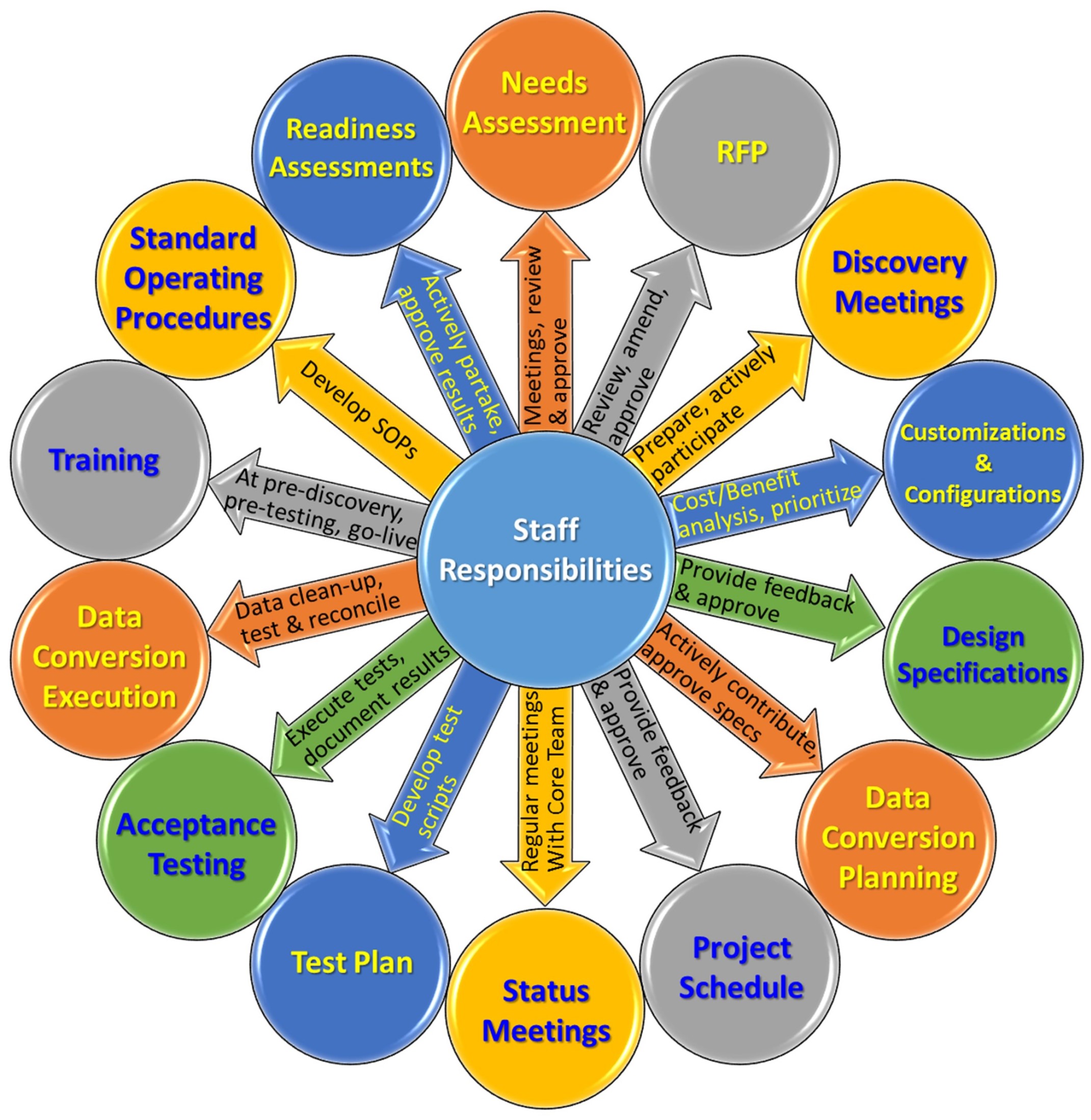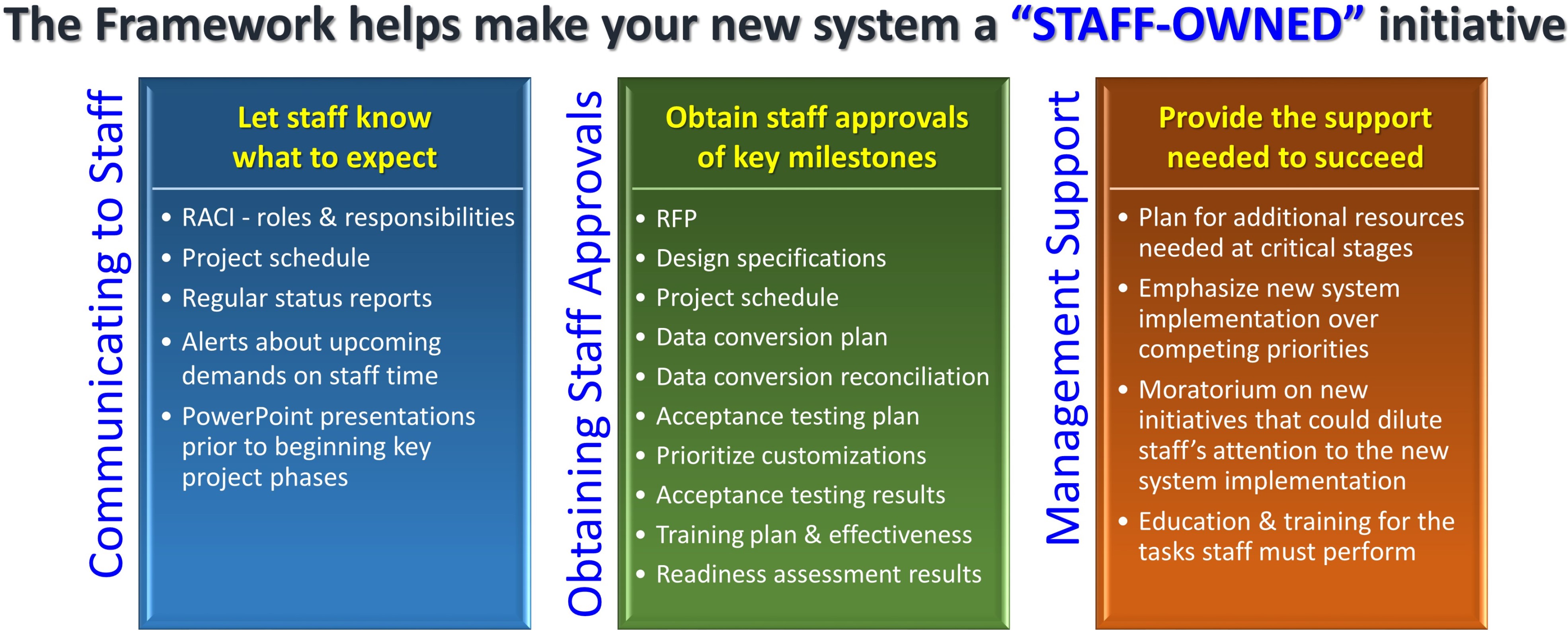Why are Failures so Common?
Project is “IT-Owned”
Lack of staff engagement because project is viewed as an “IT-owned” initiative
 Gaining staff buy-in to a new AMS, LMS, or Website requires much more than simply obtaining enthusiastic agreement about why a new system is needed. Everyone must be involved and “buy-in” to implementing the new system in order to achieve success. A new AMS, LMS, or Website requires an organization-wide effort. A single project manager, or even an entire IT Department, cannot succeed in evaluating, selecting, or implementing a new system alone. IT can facilitate and lead the charge, but if staff do not take “ownership” of the project, your implementation team will likely become overwhelmed and will end up performing (or ignoring) tasks that should have been done by staff. Unless everyone works together as a team, the risk of failure increases exponentially.
Gaining staff buy-in to a new AMS, LMS, or Website requires much more than simply obtaining enthusiastic agreement about why a new system is needed. Everyone must be involved and “buy-in” to implementing the new system in order to achieve success. A new AMS, LMS, or Website requires an organization-wide effort. A single project manager, or even an entire IT Department, cannot succeed in evaluating, selecting, or implementing a new system alone. IT can facilitate and lead the charge, but if staff do not take “ownership” of the project, your implementation team will likely become overwhelmed and will end up performing (or ignoring) tasks that should have been done by staff. Unless everyone works together as a team, the risk of failure increases exponentially.
Staff must buy-in and be prepared to undertake the enormous effort that will be required to implement the new system.

Organizational stress is a fact of life in new system implementations. Staff are expected to perform many critical tasks to plan and launch the new system, all while performing their normal job functions. The board expects “business as usual.” It is easy to find new system implementation tasks pushed to the back burner, or not given the attention they deserve. Lack of staff engagement during the planning and implementation phases is one of the primary causes of failed systems.
Staff ownership is established in the very beginning, when staff roles & responsibilities are defined in the Framework’s RACI Chart. But project ownership cannot be achieved by a one-time communication. It is a core part of the entire Framework’s philosophy.
Communications
The Framework includes many templates that let staff know what to expect in advance, so that they can properly plan for their engagement in the project. PowerPoint presentations, complete with talking points on each slide, are included for major project phases (such as the Discovery Phase kickoff, Test Script Development kickoff, Acceptance Testing kickoff, and Business Process Change kickoff). In order to gain buy-in and effective engagement, staff must know when their time will be needed and what is expected of them. Keeping staff informed on a regular basis through the Framework’s Project Status Report is also a vital component.
Obtaining Staff Approvals
There is no ownership of critical tasks without accountability. The Framework guides you through obtaining formal staff approval when key milestones have been accomplished. Decisions about what functions the new system should perform, what data should be converted from the old system, what business processes should be included in the test plan, and whether the system is ready for go-live should be made by staff, not by a single project manager or IT Department.
Management Support
It is senior management’s responsibility to effectively plan for the support needed so that staff can focus on the new system while still keeping the business running. The Framework’s Staff Time Commitment Estimator shows the percentage of total available work hours each department must devote to each phase of the implementation. Armed with this information, senior management can plan a budget for additional temporary resources, discuss imposing a temporary moratorium on new initiatives with the board, and provide other support that staff will need at critical junctures during the project.
Contact us to learn more about the
IT Guidance Framework




